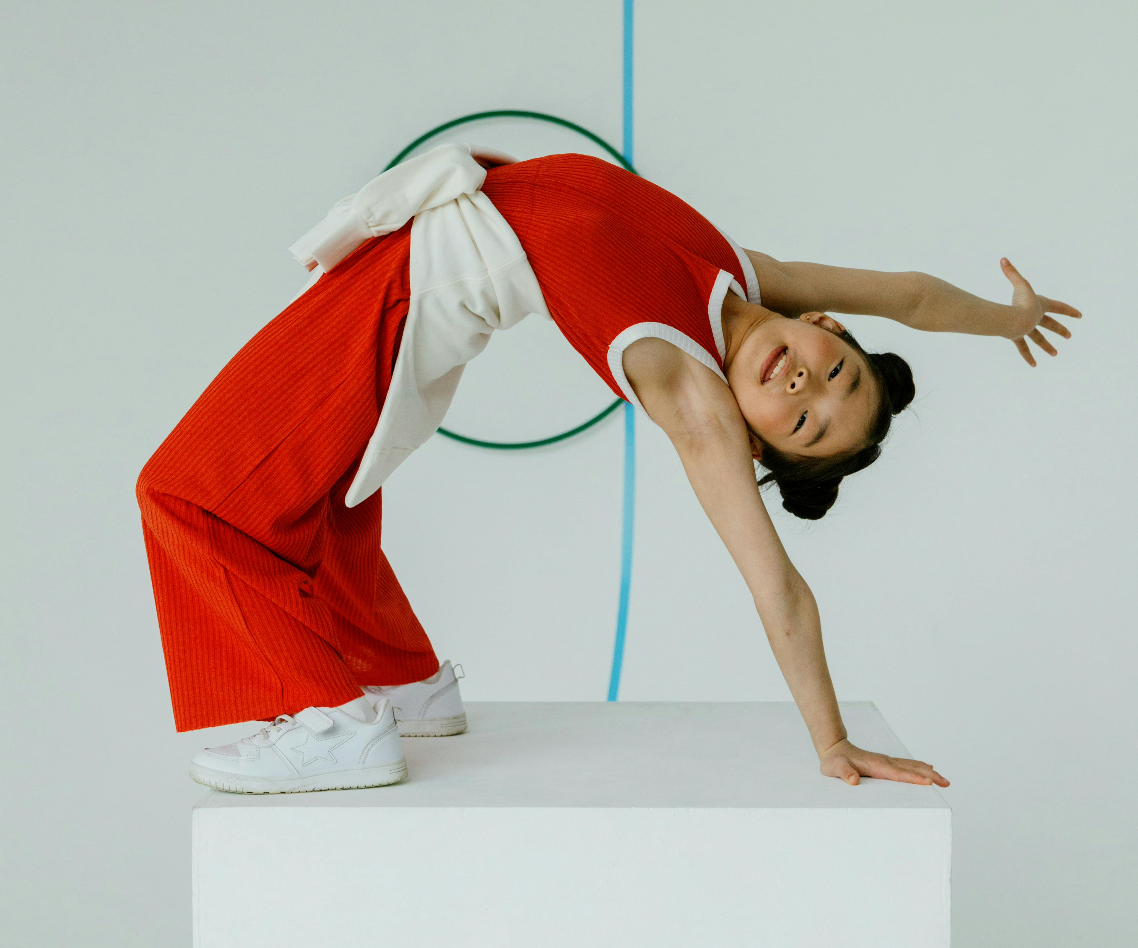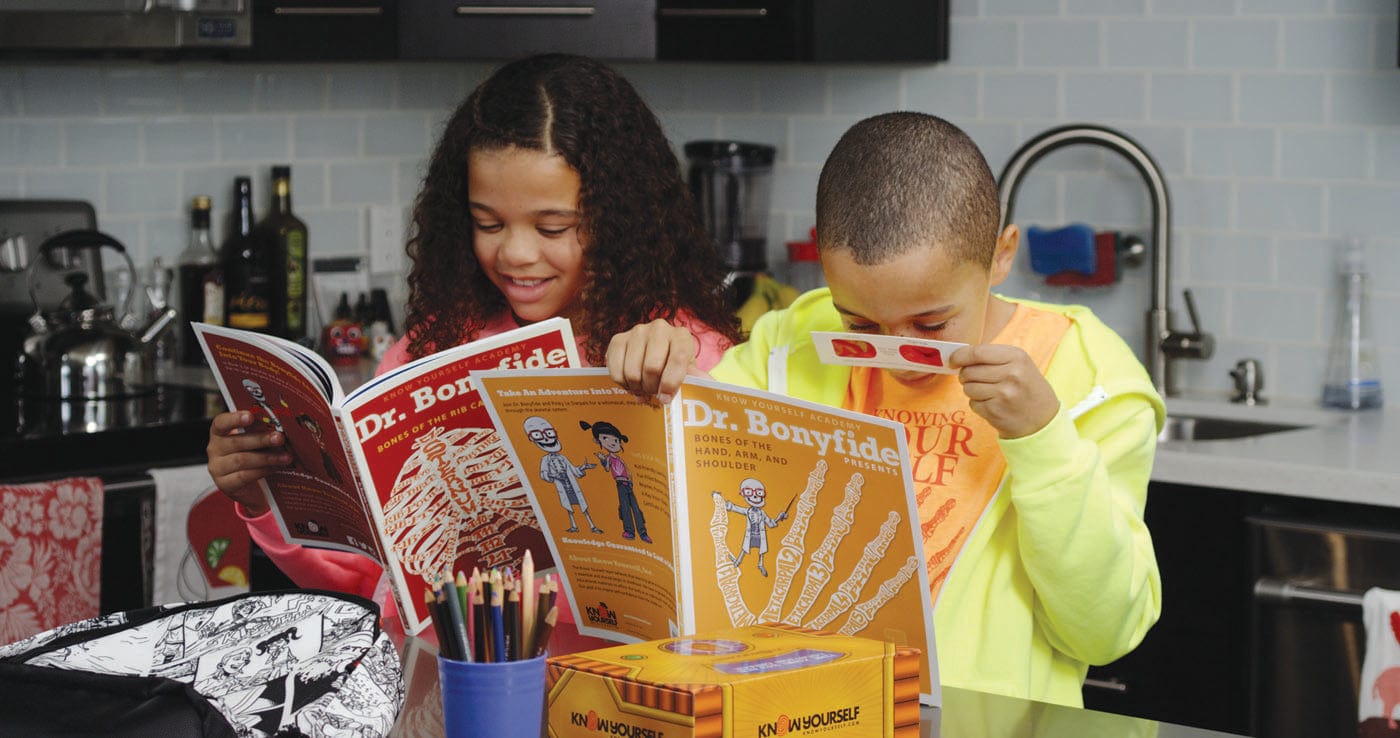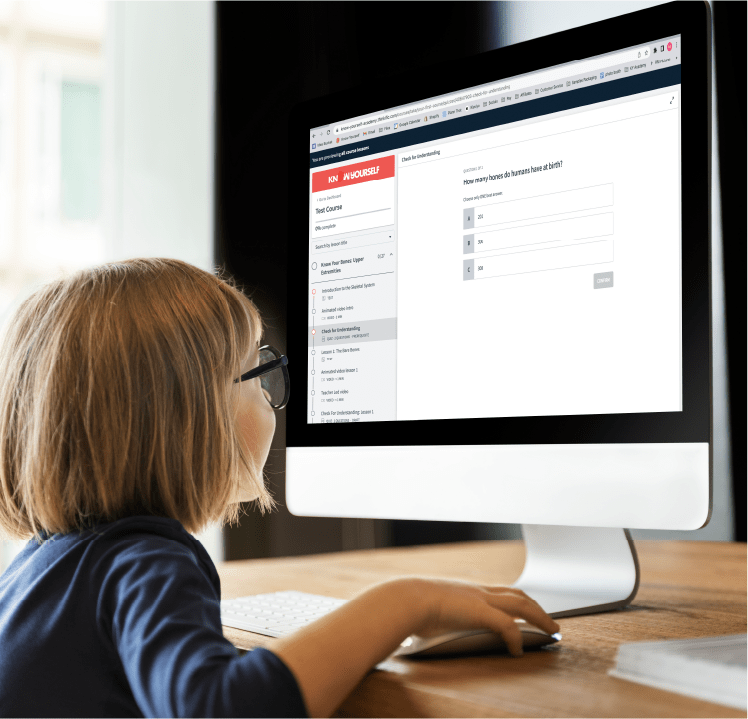
One of the systems of the body that, as adults, we think about most often is our muscular system. We are constantly assessing our ability to perform certain physical tasks, whether it be when hitting the gym, moving things around the house, or playing with kids. At other times, we think about our muscles in a more indirect way, like when we get up out of bed in the morning and our back hurts, or when you experience the feeling of finally standing up after spending a whole work day sitting in an office chair. Although our bones are what give our bodies structure, muscles are what give our bodies the majority of their movement and strength.
Types of Muscles
Our muscular system is made up of two different types of muscles: voluntary muscles and involuntary muscles. Voluntary muscles, also known as skeletal muscles, are those that surround and protect our bones and make it possible for us to move and control our body. These are the muscles that respond when we signal to our brains that we want to type an email or carefully pour a cup of coffee. The size of these muscles ranges from the four very large quadricep muscles in each leg to the 43 much smaller muscles in the face. (Introduce your child to the basic structure of the facial muscles with our DIY Muscular Mask!)
Involuntary muscles are the muscles that move and work without any conscious effort or thought. There are two types of involuntary muscles: the cardiac muscles that are constantly pumping blood from our heart to the body, and the smooth muscles that work to help push our food down the digestive tract. Even though some of our muscles operate without us having to do any conscious work, we should always be thinking about how to take care of our muscles, both voluntary and involuntary. Muscle growth and development is crucial from childhood through adulthood, and it’s important to know the ways that our bodies are able to (or not) generate muscle as we age, and what we can do to keep them strong and flexible.
Muscle Work for Kids
Many parents have a running joke that children seem to be made of rubber. They can fall off play structures or tumble while running down a hill and somehow manage to be unscathed, with the only damage being an emotional tear or two. How is it possible for children to literallybounce back so quickly? A part of the answer lies in children’s environments and schedules.
The normal school day prioritizes physical activity and factors in several opportunities for kids to exercise their muscles and get their bodies moving. Most children have one or two recess breaks a day, and multiple sessions of P.E. class a week. During recess and P.E., children often participate in games and activities that work their strength and flexibility. During a game of tag, don’t-touch-the-ground, or an obstacle course, kids are running, jumping, climbing and exercising all major muscle groups of the body! Not only are they working the muscles of their entire body, but they don’t even have to worry about fitting it in a schedule—it’s already planned for them! Additionally, it certainly helps that children’s bodies are still growing and are quick to develop muscle. Children have young bones and joints that can handle the impact of the falls, and higher metabolisms that make it much easier for them to engage in the high intensity sports and games necessary to exercise muscles.

Muscle Work for Adults
As adults, many of us have to deliberately work to make sure we activate the different groups of muscles in our body. Some people are able to do this by creating an exercise routine that focuses on one or two different muscle groups per workout, making sure that they rotate attention to their arms, legs, back, and abs. However, unless we are intentionally trying to gain muscle, many of us are not that committed to making sure we are working each of our muscle groups. The normal work day and office setting do not help with this either; our work often requires us to sit all day with very little movement and forces us to get our exercise before or after work, while often juggling other personal events or chores. This can complicate or prevent us from finding the time to exercise and can quickly become a problem for the adult body. Rather than just remaining stagnant, if we do not actively use our muscles they begin to atrophy, and it is unfortunately much harder for us to gain back muscle mass and function after we have lost a significant amount of it. If we ignore certain muscle groups, it can be hard to get those muscles back to doing what they were capable of before, especially the older we get.
If we think of our body like a house, it is much easier to keep a house in prime condition by providing routine, preventative maintenance. But, if you fail to check up on and take care of all the different pieces, things can begin to fall apart, and once something falls apart, it is much harder to fix than before. We don’t want to hit that point where it’s hard for our bodies to kickstart the muscle building/maintaining process again. Keeping a consistent routine of exercising and stretching our whole body is the best thing we can do to preserve muscle as we age. We want to maintain the mobility and strength of our muscles for as long as possible so we can continue to live day-to-day doing the things and activities that we enjoy. We also want to keep our muscles strong to prevent injury to our bones that weaken with age; when muscles weaken we are more prone to hurting ourselves.

Get Moving as a Family
Having an increased awareness about how our bodies grow and develop muscles can help us create a family lifestyle that prioritizes exercise. We want our children to enter adulthood with healthy habits they’ve been practicing for several years. For parents, this means making sure that children and teens get involved in sports and physical activity as early as possible. Introduce them to new athletics and encourage and support the ones they’re interested in. Start a weekly family routine or tradition where everyone does an activity or sport activity together! Invest in a collection of versatile exercise equipment that can be used for a variety of games or challenges like this tri-fold mat, speed ladder, balance pod, or these convertible cone hurdles. Create an obstacle course or different challenge stations where family members can test their skills or speed each week and you can celebrate progress as a family! No matter the type of athletic, when a kid is used to routine exercise throughout childhood it can set them up to make independent decisions later in life that keep their muscles strong and healthy.










Leave a comment (all fields required)